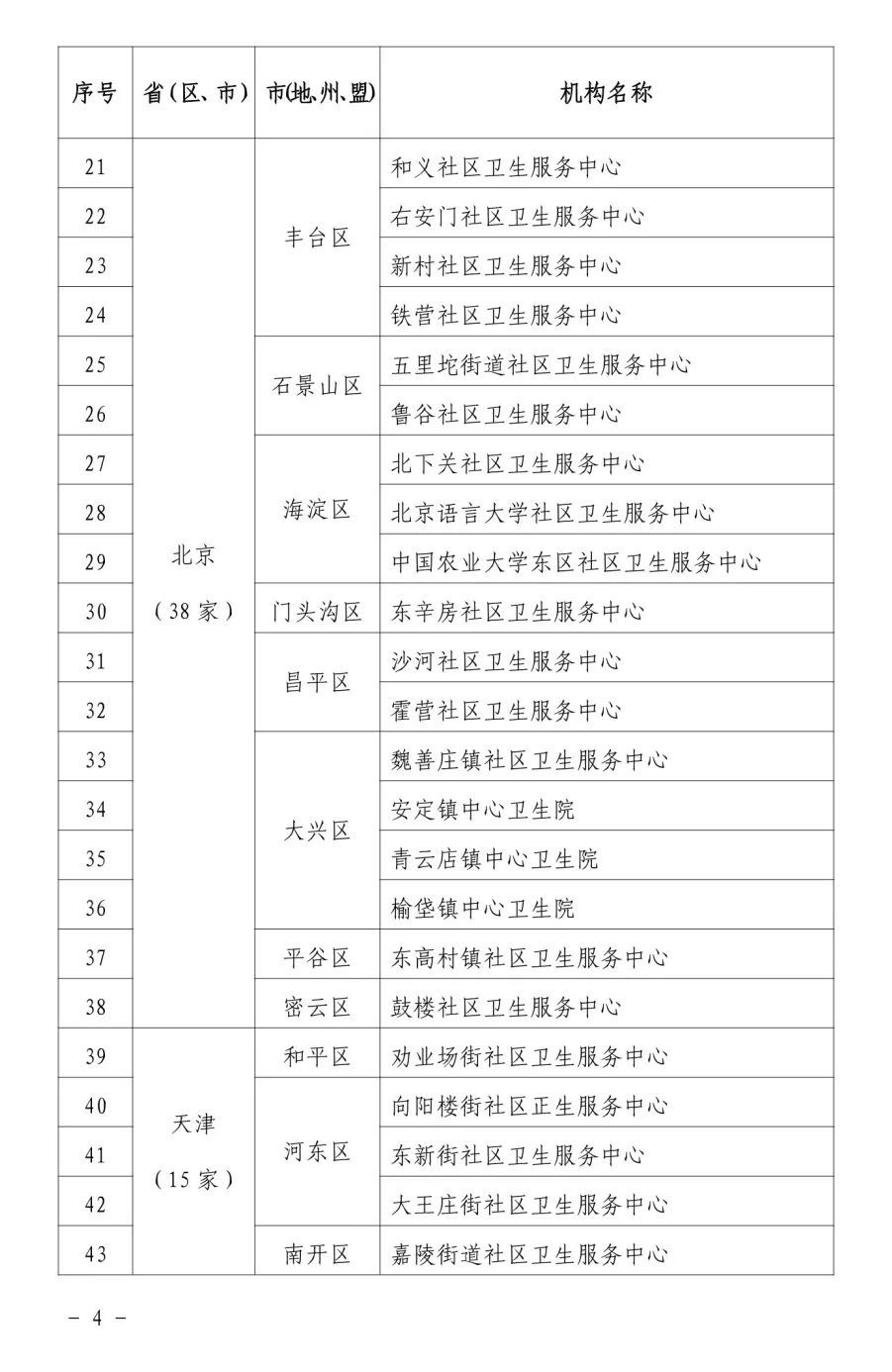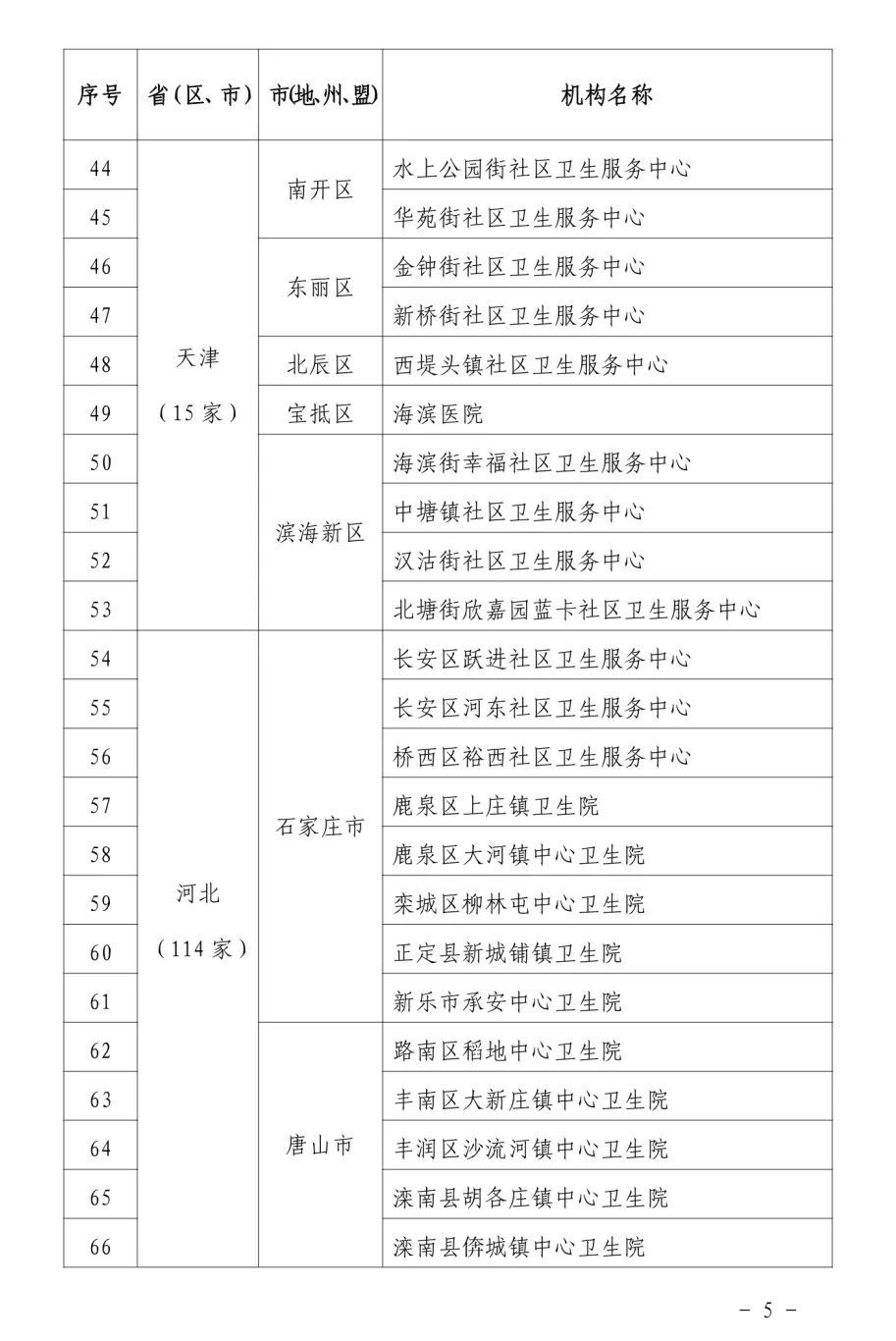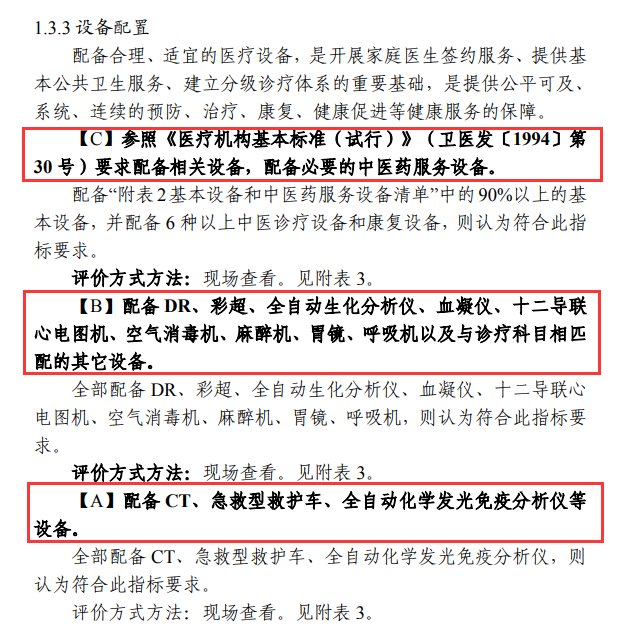▌IVD information content team editor
Source: Medical Device Distributors Alliance
A large number of townships and community health centers
will be upgraded to secondary hospitals< /p>
Recently, the National Health and Medical Commission and the State Administration of Traditional Chinese Medicine jointly issued a notice on the announcement of the outstanding performance and high-quality service institutions in the 2021 “Quality Service Grassroots Tour” activity.
The notice stated that after the “quality service at the grassroots level” activities will be carried out in 2021 in accordance with the work deployment, more than 2,200 community health service centers and township health centers have been finally determined to meet the recommended service capacity standards after evaluation.

The activity of “Quality Service for Grassroots” was launched for the first time in 2018. The two types of medical institutions of the service center have proposed new construction standards and made clear requirements for equipment configuration.
Strive to make the service capacity of township health centers and community health service centers reach the basic standard, and some township health centers and community health service centers with stronger service capacity meet the recommended standards.
The National Health and Health Commission will inform and commend the township health centers and community health service centers that have performed outstandingly in the activities. Township health centers that meet the recommended standards can participate in the evaluation of secondary hospitals if they meet the relevant conditions, and further strengthen the management of medical quality.
This means that a large number of hospitals will be upgraded to Level 2. This time, the 2,200 township health centers and community health service centers that have reached the recommended standards are among them. These hospitals need to increase the configuration of medical equipment, and also increase the purchase of medical consumables to cope with the increase in the volume of diagnosis and treatment after the upgrade.
Swipe left and right to view some lists



Upgrading secondary hospitals
What standards to meet
2018 For the first time, the National Health and Health Commission issued the “Notice on Carrying out the Activities of “Quality Service at the Grass-roots Level”, and at the same time formulated the service capacity standards of township health centers and community health service centers. In 2019, the service capacity standards of township health centers and community health service centers were updated.
Prior to this, township health centers were mainly set up with reference to the “Basic Standards for Medical Institutions”. There was no unified blueprint for specific functional positioning and service capability standards for comparison. With further development and implementation, the construction of health centers across the country will be further standardized, and the functional positioning will be more accurate.
In terms of equipment configuration, in addition to basic equipment, it is also required to improve inspection and inspection service capabilities, reasonably configure and update necessary facilities and equipment, and carry out routine inspections and inspection services such as ECG, ultrasound, and X-ray imaging.

※ Grade A means “excellent”, grade B means “good”, grade C means “qualified”, grade D stands for “unqualified”.
In terms of department setting, the new version of the standard requires qualified health centers to establish five basic departments, among which general medical department has been set as a required option for department setting.

The state vigorously supports the upgrading of primary hospitals
Guizhou:
February On the 8th, according to the “Guizhou Daily” report, in 2022, Guizhou Province will start the construction of the first batch of 50 county-level medical sub-centers. A total of 250 million yuan will be invested by the provincial finance. The funds will be mainly used for department setting, talent team construction, medical treatment. Equipment configuration, etc., it is strictly prohibited to hold, withhold or misappropriate funds.
The county medical sub-center is still essentially a township health center. It is a non-profit and newly added medical and health institution, and does not support new construction. Its main task is to provide residents with diagnosis and treatment, rehabilitation, Nursing and emergency emergency and referral services for acute, critical and difficult diseases, and can carry out secondary routine surgical operations.
Hunan:
On January 7, the “Opinions of the General Office of the People’s Government of Hunan Province on Promoting the High-Quality Development of Grass-roots Health Care” pointed out that the encouragement of selection has reached the “high-quality service grass-roots level”. Focus on construction of township health centers that meet the recommended standards for the “Going” activity, increase investment and guidance, benchmark the medical service capabilities of county-level hospitals, and build county-level medical sub-centers.
Sichuan:
On January 12, the Sichuan Chengdu Municipal Health Commission announced the first batch of 20 establishment units of county-level medical sub-centers in Chengdu.
Sichuan will build a county-level medical sub-center, which is included in Sichuan Province’s “14th Five-Year” National Economic and Social Development Plan and “14th Five-Year” Health and Health Development Plan, and has invested 1.26% in 2021 100 million yuan will be used to support the construction of the first batch of 42 sub-centers, and 150 county-level medical sub-centers will be built in 2022.
Shandong:
In March 2021, Mi Kuanqing, member of the party group and deputy director of the Jinan Municipal Health Commission of Shandong, introduced that Jinan will choose Diao Town Health Center, Zhangqiu District, Jiyang 12 institutions including the District Health Center of Duoshi Town have built county-level medical service sub-centers to build a medical-prevention integration system.
Anhui:
On December 17, 2021, 17 township health centers in Lu’an City, Anhui Province successfully established a secondary general hospital. On January 24, the Huaining Health and Health Commission of Anqing City, Anhui Province proposed to build a county-level medical sub-center. Based on the principle of “classified management, dislocation development, and regional separation”, efforts were made to build Yueshan, Huangdun, Jiangzhen, Shipai, The five regional diagnosis and treatment sub-centers in Gongling focus on improving the ability of primary medical services to meet the medical needs of the masses.
These documents mean that more and more township health centers will be upgraded to secondary hospitals.
Between the health center and the secondary hospital
How big is the “gap”
Upgrading the level will lead to the expansion of the scale of the health center and the increase of equipment configuration.
my country’s medical system is set up according to the first, second and third levels, and the scale of the hospital is different according to the different levels. The size of the hospital corresponds to the corresponding staffing, equipment configuration standards, hospital construction, capital investment, charging standards and many other differences.
It is a fact that the number of medical staff in health centers is small, the configuration of medical equipment is simple, the charging standard is low, and the scale of hospital buildings is small. If the health center is upgraded to a second-level hospital, the corresponding hospital personnel, equipment, charges, and hospital buildings can have a relatively large room for improvement.
At the same time as the scale and service increase simultaneously, the gap of “medical equipment” must be rapidly expanded.
The “reborn” health center needs more and higher quality inspection equipment and medical consumables to meet the technical and environmental standards of “second-class hospitals”, which is undoubtedly for medical equipment dealers. It’s a good news with great potential.
How big is this “gap” between health centers and secondary hospitals, and how much profit can it bring? We might as well compare the equipment requirements of township health centers and county-level hospitals, find out the equipment differences, and find business opportunities.
The first is the medical equipment configuration table of county-level hospitals:

County-level hospitals’ The demand is roughly the same. For the current equipment configuration standards of township health centers, we can refer to Zhejiang Province:


